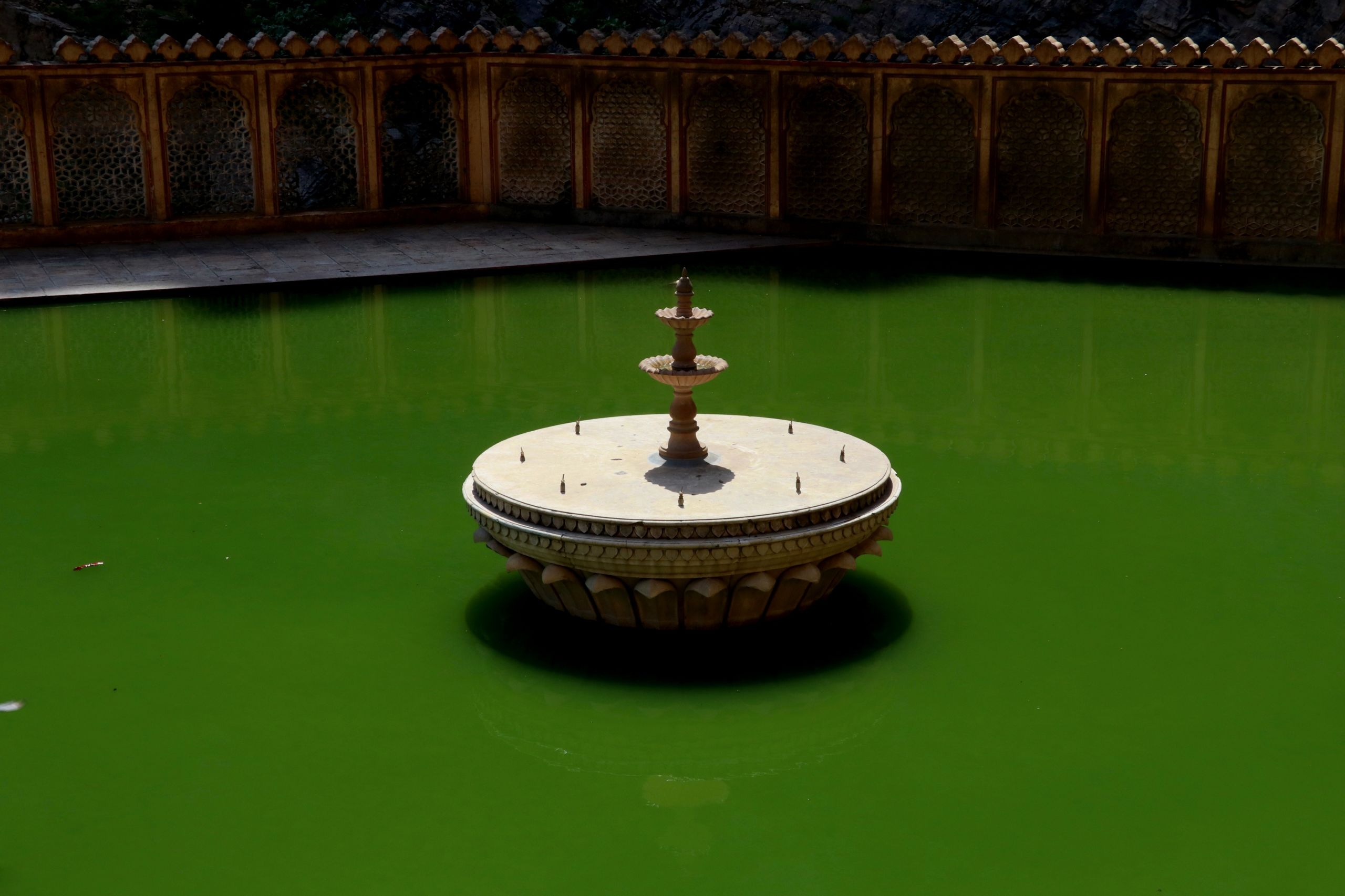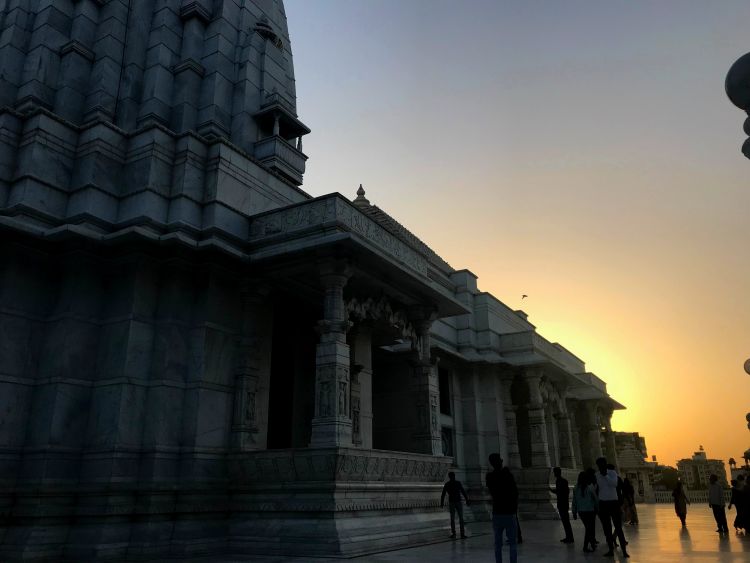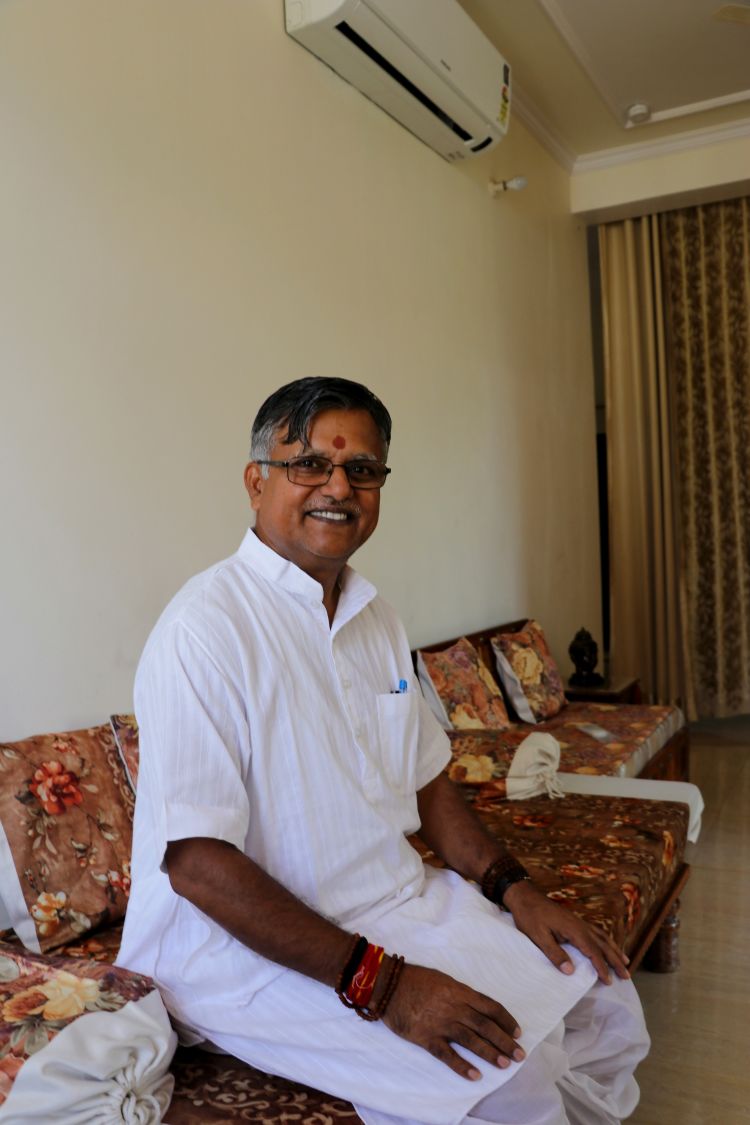Symbiosis Part 2
Religion, Irreligion and Changes in Indian Spirituality
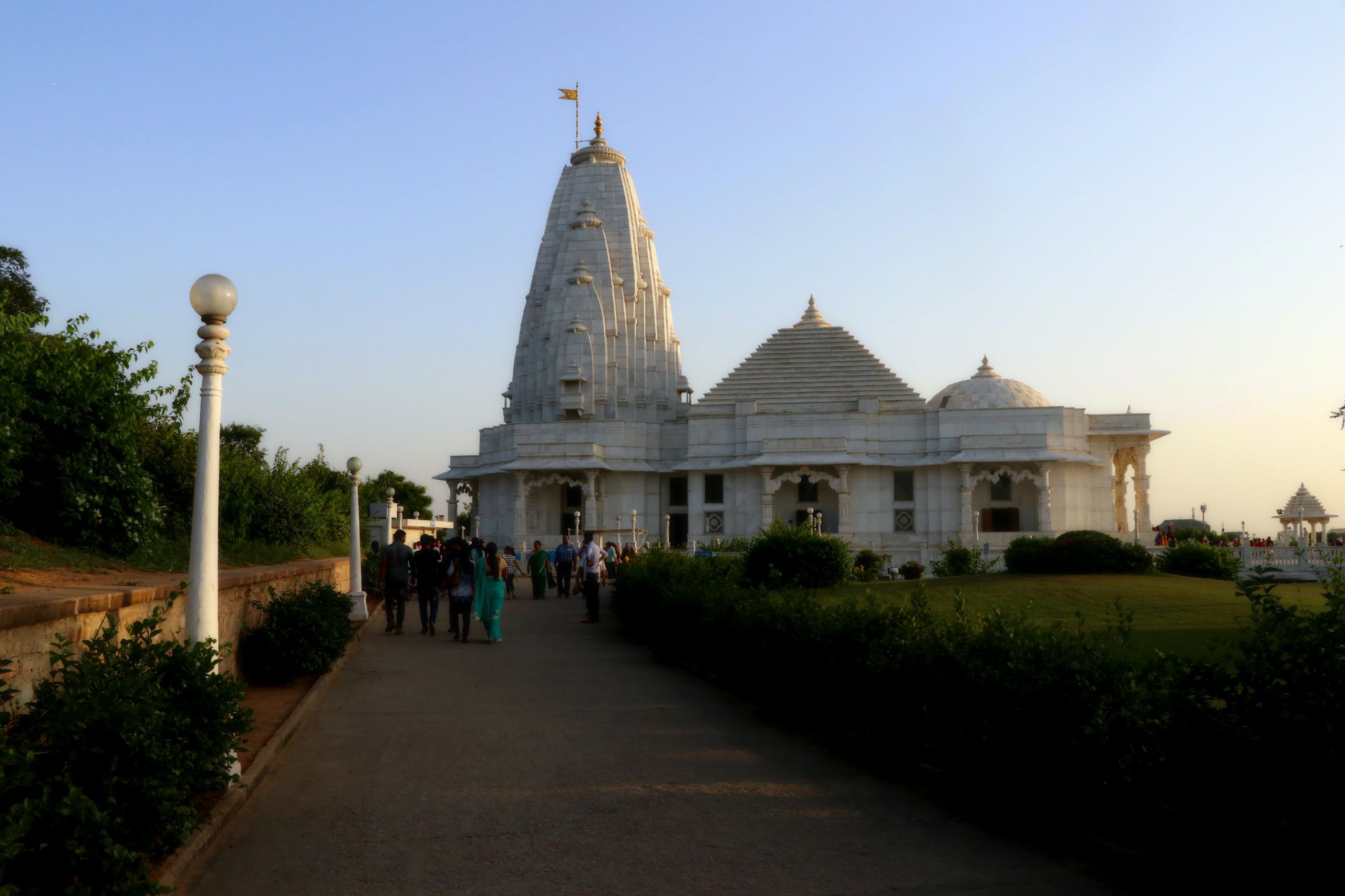
In the heart of Pink City, the marble white façade of Birla Mandir is radiant.
At twilight, the whites of the temple catch the sun and reflect the heavens through the city.
Unlike Galtaji, which lies 10km outside Jaipur, Birla Mandir is located in the city itself, between banks and Universities. But the temple is raised – elevated – built into the base of the Moti Dungari hill.
And there the Birla Mandi, Jaipur, protrudes literally from the city. On its hill, the sacred marble sculpture is magnificent. It is a pearl in among the urban sprawl.
Inside the temple, Hindu gods are depicted in stained-glass windows. Just as the temple shoots light through Jaipur, these windows refract the kaleidoscopic colours of their deities through the temple.
Yes, dear reader, we are starting, again,with a temple.
This is the second part of a story. Like the first part, it is about India and religion. It begins with a temple because the temple is symbolic.It represents a prevailing trend in Indian culture or, rather, a trend in the evolution thereof.
At its centre – in its heart – the Birla Mandir, Jaipur, is a Hindu temple dedicated to Lord Vishnu and Goddess Laxmi. Along with the marvellous stained-glass windows, the temple hosts a shrine to these deities.
In front of the shrine is an empty floor where dozens of people sit. Some have their eyes open; others have theirs closed.
“People come here to meditate. To relax. Some of them are not even Hindu.” My friend and guide, Cheshta Mathuria, told me this.
As it goes, Birla Mandir is not just a place for Hindus. Its white marble walls of the Birla Mandir are chaste and clean; they inspire peace and prosperity. The carvings they carry encourage diversity and tolerance.
On the outside of the temple are personages of Socrates and Aristotle. There are carvings of the Madonna and her son Jesus Christ.
As I – and now you – have learnt, India’s past is overwhelmingly Hindu. And, with 81% of the population subscribing to the religion, we can say that the country’s heart is too. However, much like the Birla Mandir, the country plays host to a number of peripheral religions that have arisen over time.
Persian settlers and missionaries brought an organised Christian presence to India in the third century. Sikhism, Jainism and Buddhism evolved as offshoots of Sanatan Hinduism. They flourished, these religions, and over time garnered a place in the country’s identity.
Birla Mandir stands as a testimony to this. The temple is marked, literally, by the influences of different cultures.It is a powerful place, and it speaks volumes about Indian culture.
But the temple does not tell the future.
"Globalisation is changing religion.
"With the pressures of work, of life; some people cannot worship like they used to.”
These were the words of Saket Raman, an assistant professor at Amity University.
Professor Raman’s most powerful statement, however, was his simplest: “India is changing.Religion is changing.”
He spoke of modern workplaces and the ways in which these workplaces allow people to subvert class-based roles; they force interaction where interaction might previously not have occurred.
ProfessorRaman spoke also about the constraints of nine to five. Between that and theJaipur traffic, people – he said – are pressured for time. The result: a youth that is growing increasingly distant from religion.
This is what he said.
In the 2011 census, 0.24% of India’s population did not state a religious identity. The previous census, in 2001, saw only 0.1% of the population responding in such a way. From the census, one can gather that India is experiencing a growth in irreligion. What the census does not tell us is that certain youths have even adopted atheist views.

I spoke with one such individual. And after we spoke, we played soccer –football, he called it. After football, we ate dinner. And at dinner, we became friends.
This individual’s name is Dishant Solanki.
Dishant argues constantly with Professor Raman; his classmates told me this.
The courageous and well-spoken journalism student, is notorious among his cohortfor opposing religion.
“I started questioning things because I was left handed. My teachers they tried to convert me into being right handed. In India we wash with our left; so it is improper to write, or to eat, with your left…”
“One out of ten people is left-handed,” he said.
“Why?
“Why can’t I be the one?”
The well dressed soccer player might not have donned safety pins or scribbled anarchist signs but he was the closest thing to a punk I saw during my stay inRajasthan. And Dishant believes that – much like the Punk counter culture grew in 1970s London – atheism will flourish in India.
“Everyone is starting to feel differently about these religious things. People are being exposed to different cultures. The younger generation have started to question.I think, after 30, 40 years more people will be saying that they don’t believe.”
Astrologer, Dr Vinod Shastri sbegs to differ.
As it goes, Dr Shastri is quite famous; he has been featured by The Lonely Planet. He is also the youngest recipient of the “National Harit Rishi Award”, and he offered me his observations about changing times in India.
“Globalisation will not change religion.Nothing can change religion.
But people and things change. And they are changing now, yes.”
Dr Shastri claims that most adults, in India, believe in astrology. And NPR concur, in their exploration of Science and Astrology in India.
“Astrology plays a role in the day-to-day lives of millions of Indians,” Julie McCarthy writes (for NPR).
Despite this, Dr Shastri has observed an emerging trend of disbelief in India’s youth.
“The youth, they don’t believe. They have hopes of their future. They want to control their destiny.”
When he spoke, I assumed – as you may be assuming now – that Dr Shastri was predicting India’s movement away from astrology.
But he was not.
True,Dr Shastri was speaking about the trend of irreligion in the nation’s youth.But he was not predicting the continuation of this trend.
He was saying that “the young will believe again.”
“They do not believe because now they are doing work and getting results. They are fixated; they are satisfied. They have their life planned out: study, job, marriage."
Whether Dr Shastri is right, I cannot tell you. That, as they say, remains to be seen.
I can, however, tell you this.
Dishant, the atheist, was happy escorting me through religious sites and explaining their significance. He was happy sharing history with me; and his narration of history was impartial. He never once made a point of convincing me of atheism –despite his conviction and doing so to his colleagues.
Do you remember Atithi Devo Bhava? The Government initiative and ancient Hindu proverb, the one that says, “Our guest is our god”.
Do you remember what I said?
Atithi Devo Bhava has transcended religion. It is, now, part of Indian culture.
About Atithi Devo Bhava, Dishant said “This is not so much religion, as it is who we are.”
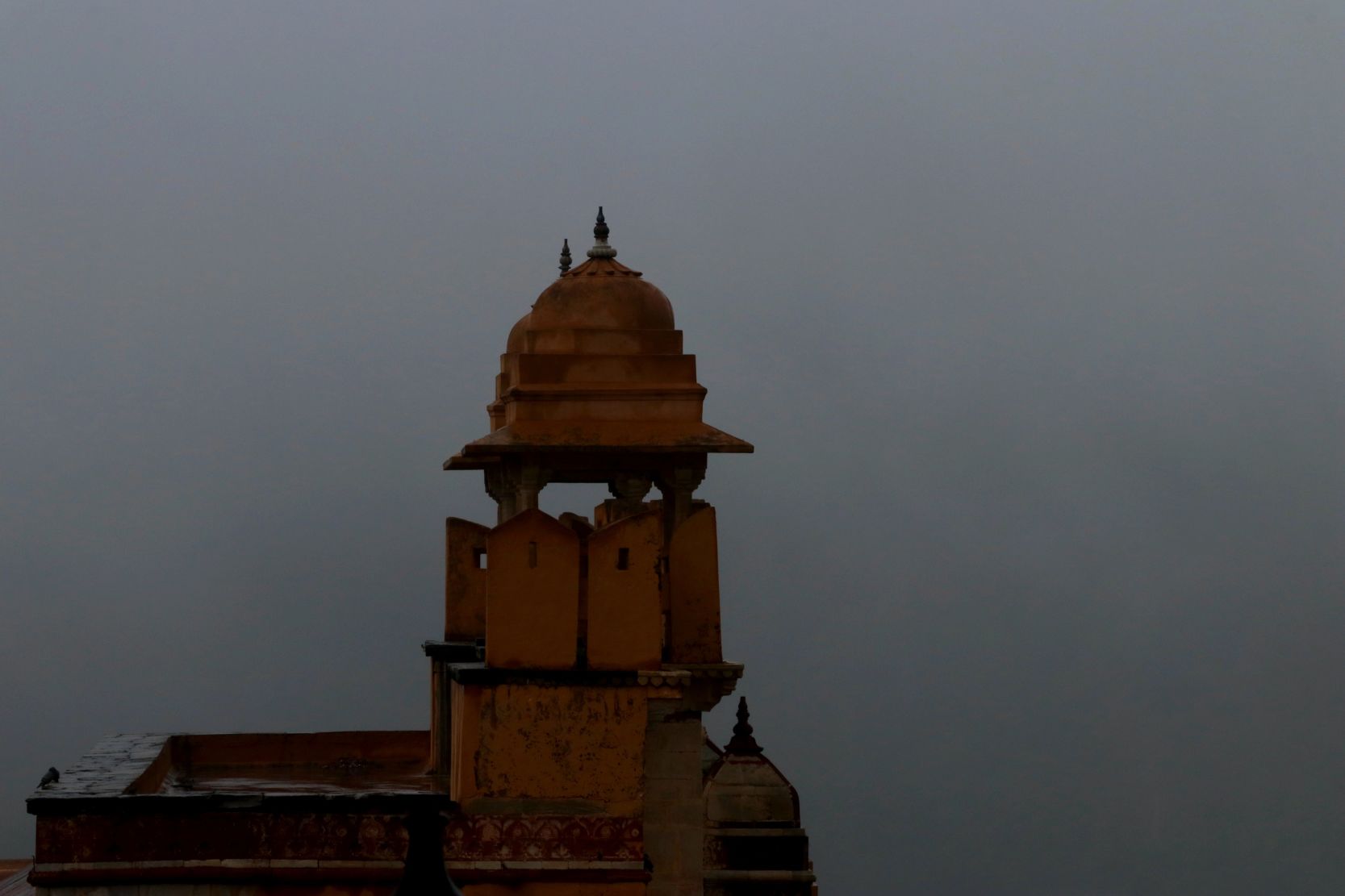
The peak of a temple in a grey, and uncertain, fog.
The peak of a temple in a grey, and uncertain, fog.
These are transformative times for Indian culture. There is a growing trend of irreligion and a growing disbelief in astrology. I had hoped to tell you about the changes these trends may cause. But I cannot. I can only acknowledge that these changes are occurring.
New– and, perhaps, contentious – mindsets are percolating in India’s youth.
The mindsets come from globalisation.
They may endure; but, then again, they may not.
I have seen Indian religion and I have seen Indian culture. I have seen how the two are connected. I have heard an astrologer speak, extensively, about science and logic; I have heard a Muslim man confess his adoration of elephants. And I have seen an atheist man welcome me in accordance with religious traditions.
From my experiences, I can only say this:
It seems that despite the changes in religion and the movement of youth away from their pious roots, certain Indian traditions will remain.
Religion is in everything. But some things are greater, even, than religion.
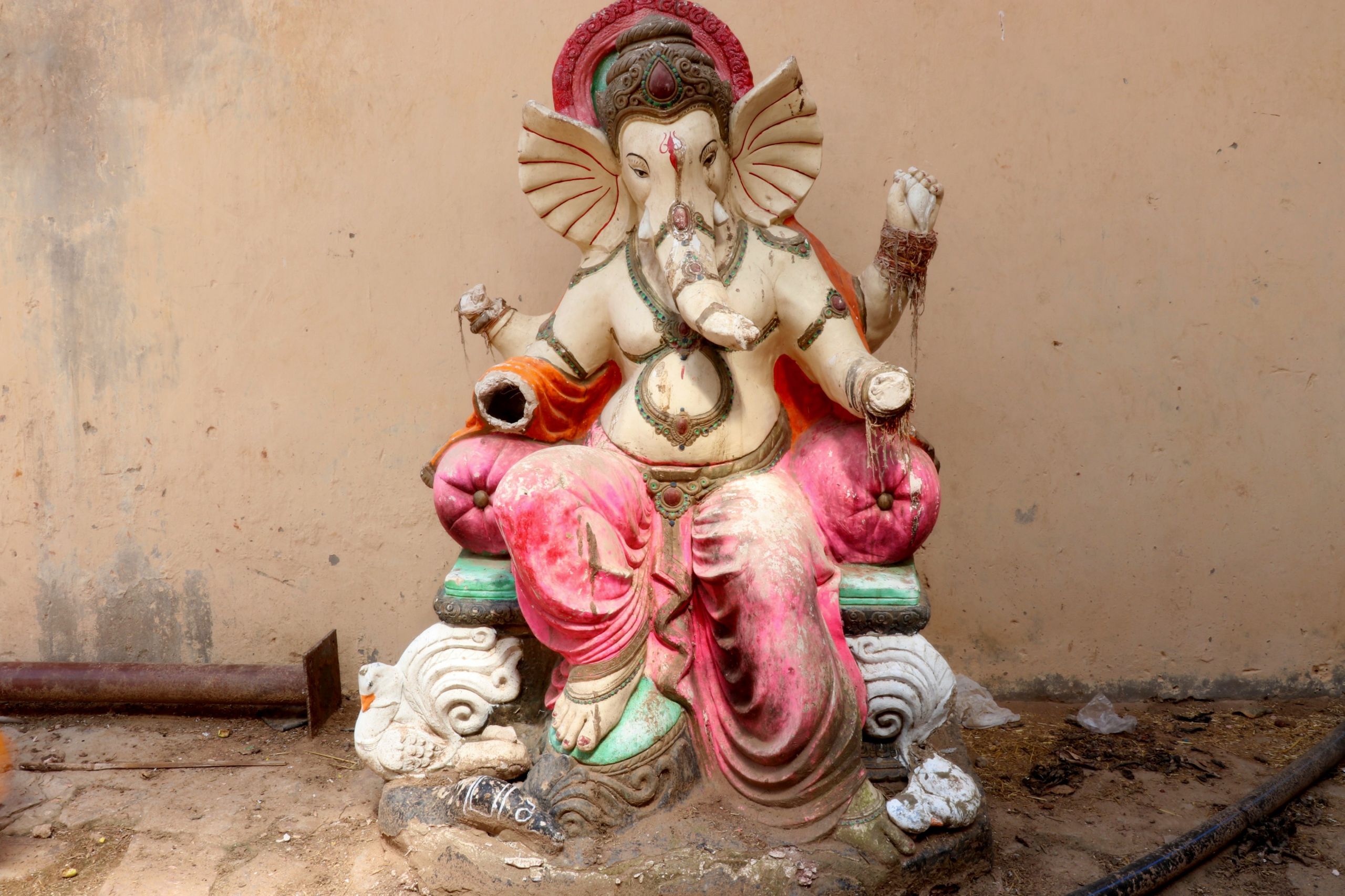
This story, it started with a temple. Galtaji, it is called. You may know it – or remember it, even – as the Monkey Temple. The temple has a spring – a Kund, if you recall. That Kund is special.
Do you remember why?
The Galta Kund never dries.
For the people of Jaipur, the Kund is holy. For tourists, it is a place to see monkeys. And for this story, it is an allegory. It represents the spirituality of India.
How?
Listen.
The world changes. There are droughts; there are monsoons. And, through it all, the Kund prevails.
It is a vestige, a scion:
always flowing, always full.
